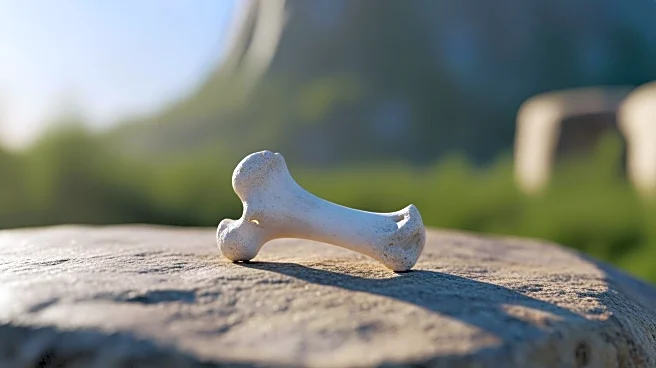What's Happening?
Researchers Miki Ben-Dor and Ran Barkai from Tel Aviv University have proposed a new theory linking the extinction of Neanderthals and the domestication of dogs to significant developments in human evolution.
Their study, published in the journal Quaternary Environments and Humans, suggests that the Late Quaternary Megafaunal Extinction, which began 50,000 years ago, played a crucial role in shaping human evolution. As large animals became extinct, humans adapted by developing new hunting technologies, such as arrows, and forming alliances with wolves, leading to the domestication of dogs. This period also saw the emergence of cultural innovations, including art and symbolic expression, which were pivotal in human expansion and survival.
Why It's Important?
This theory provides a comprehensive explanation for how Homo sapiens managed to thrive despite the extinction of large prey animals. The domestication of dogs is highlighted as a key adaptation, offering humans a strategic advantage in hunting smaller animals. This partnership allowed humans to efficiently utilize available resources, contributing to their survival and eventual dominance. The study underscores the interconnectedness of ecological changes and human cultural evolution, offering insights into the adaptive strategies that enabled humans to outcompete other hominin species, such as Neanderthals, who lacked similar innovations.
What's Next?
Further research is likely to explore the specific mechanisms of dog domestication and its impact on human societies. Archaeologists and anthropologists may investigate additional evidence to support or refine this theory, potentially examining genetic data and archaeological findings to better understand the timeline and processes involved. The implications of this research could influence our understanding of human history and the role of interspecies relationships in evolutionary success.
Beyond the Headlines
The study raises questions about the ethical considerations of human impact on ecosystems, as the extinction of megafauna was partly driven by human hunting practices. It also highlights the long-term consequences of human-animal relationships, which continue to shape societies today. The domestication of dogs, for instance, set a precedent for future domestication of other animals, influencing agricultural practices and societal structures.











